Prostate health is a vital aspect of men’s well-being, and yoga can play a significant role in maintaining and improving it. With the right combination of poses and practices, yoga can promote relaxation, increase flexibility, and enhance circulation – all of which contribute to better prostate health.
In this blog post, we’ll explore an easy-to-follow 8-step yoga routine specifically designed to target prostate health. Whether you’re a seasoned yogi or a beginner, this routine can help you experience the numerous benefits that yoga has to offer.
Table of Contents
Step 1: Relax and Let Go
To start your yoga routine, follow these steps:
- Find a comfortable surface: Choose a flat, stable surface to lie down, such as a yoga mat or a soft carpeted area.
- Position your body: Lie down on your back with your feet apart, approximately hip-width distance, and your hands resting at your sides.
- Breathe and release tension: Close your eyes and take a few deep breaths, focusing on relaxing your muscles and letting go of any stress or tension.
- Prepare for the exercises: Gently open your eyes and mentally prepare yourself for the upcoming yoga exercises, setting an intention for your practice.
By following these steps, you’ll create a calm and focused atmosphere to begin your yoga routine for prostate health.
Step 2: Knee Opening and Closing
In this exercise, you’ll be working on knee movements to promote flexibility and relaxation. Here’s how to perform the knee opening and closing exercise:
- Position your feet: While lying on your back, bend your knees and place your feet about hip-width apart on the ground.
- Open your knees: Slowly and gently open your knees to the sides, allowing them to drop towards the floor as far as comfortable for you.
- Close your knees: Bring your knees back together by engaging your inner thigh muscles and gently drawing your legs towards each other.
- Repeat the movement: Continue to open and close your knees in a slow and controlled manner, focusing on smooth and gentle movements. Aim for 10 to 15 repetitions.
This exercise helps to increase flexibility in your hips and thighs while encouraging relaxation throughout your lower body. Remember to listen to your body and avoid pushing yourself beyond your comfort level.
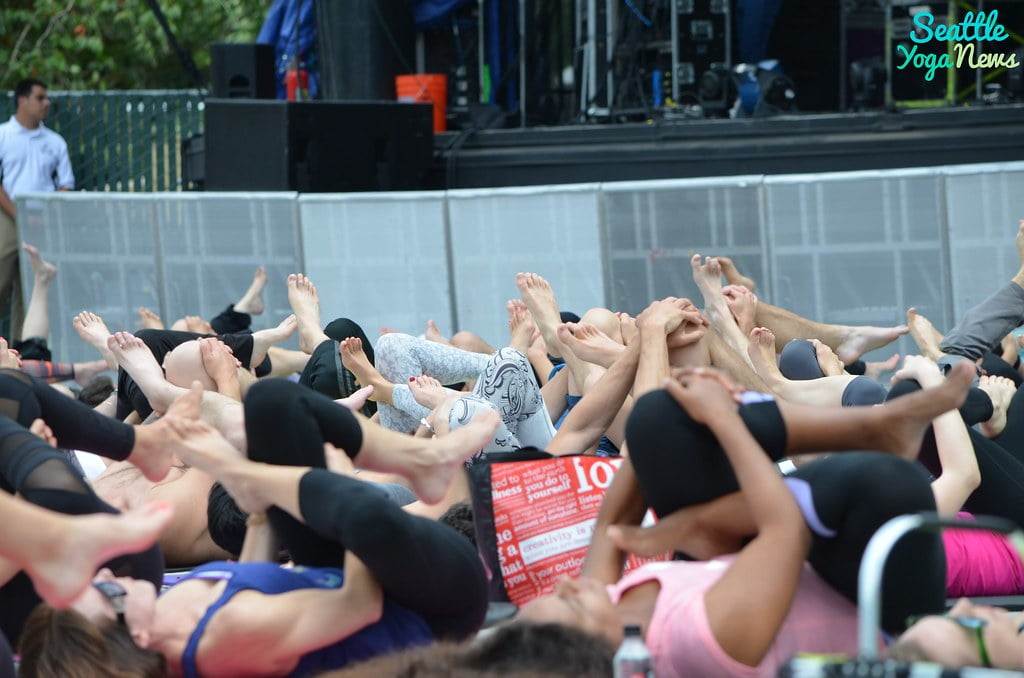
Step 3: Single Leg Press
The Single Leg Press is an excellent exercise for stretching the hips, thighs, and lower back. Follow these steps to perform the pose correctly:
- Bend your right knee: While still lying on your back, bend your right knee and lift your foot off the ground.
- Hold your knee: Reach your hands around your right knee, interlocking your fingers or holding your wrist for additional support.
- Press your knee gently: Carefully draw your right knee towards your chest, applying gentle pressure. Be mindful of your body’s limits, and avoid any discomfort or strain.
- Hold the pose: Maintain the position for 20 seconds to one minute. The longer you hold the pose, the more effective it will be for prostate health.
- Release and switch legs: Slowly release your right leg back to the ground. Repeat the process with your left leg, ensuring you give equal attention to both sides.
Remember to breathe deeply and evenly throughout the exercise, focusing on maintaining a sense of relaxation and comfort.
Step 4: Double Leg Press
The Double Leg Press is a progression from the Single Leg Press, providing an enhanced stretch for the hips, thighs, and lower back. To perform this exercise, follow these steps:
- Bend both knees: From a lying down position, bend both knees and lift your feet off the ground.
- Hold your knees: Reach your hands around both knees, interlocking your fingers or holding your wrists for additional support.
- Press your knees gently: Carefully draw both knees towards your chest, applying gentle pressure. Be mindful of your body’s limits, and avoid any discomfort or strain.
- Maintain hip position: Keep your hips on the ground while pressing your knees towards your chest. This helps to ensure proper alignment and prevent unnecessary strain on your lower back.
- Hold the pose: Maintain the position for a short period, focusing on deep, even breathing.
- Release: Slowly release your legs back to the ground, allowing your muscles to relax.
Remember to listen to your body and avoid pushing yourself beyond your comfort level. This exercise can be modified by pressing your knees towards your chest one at a time if the double leg variation is too challenging.
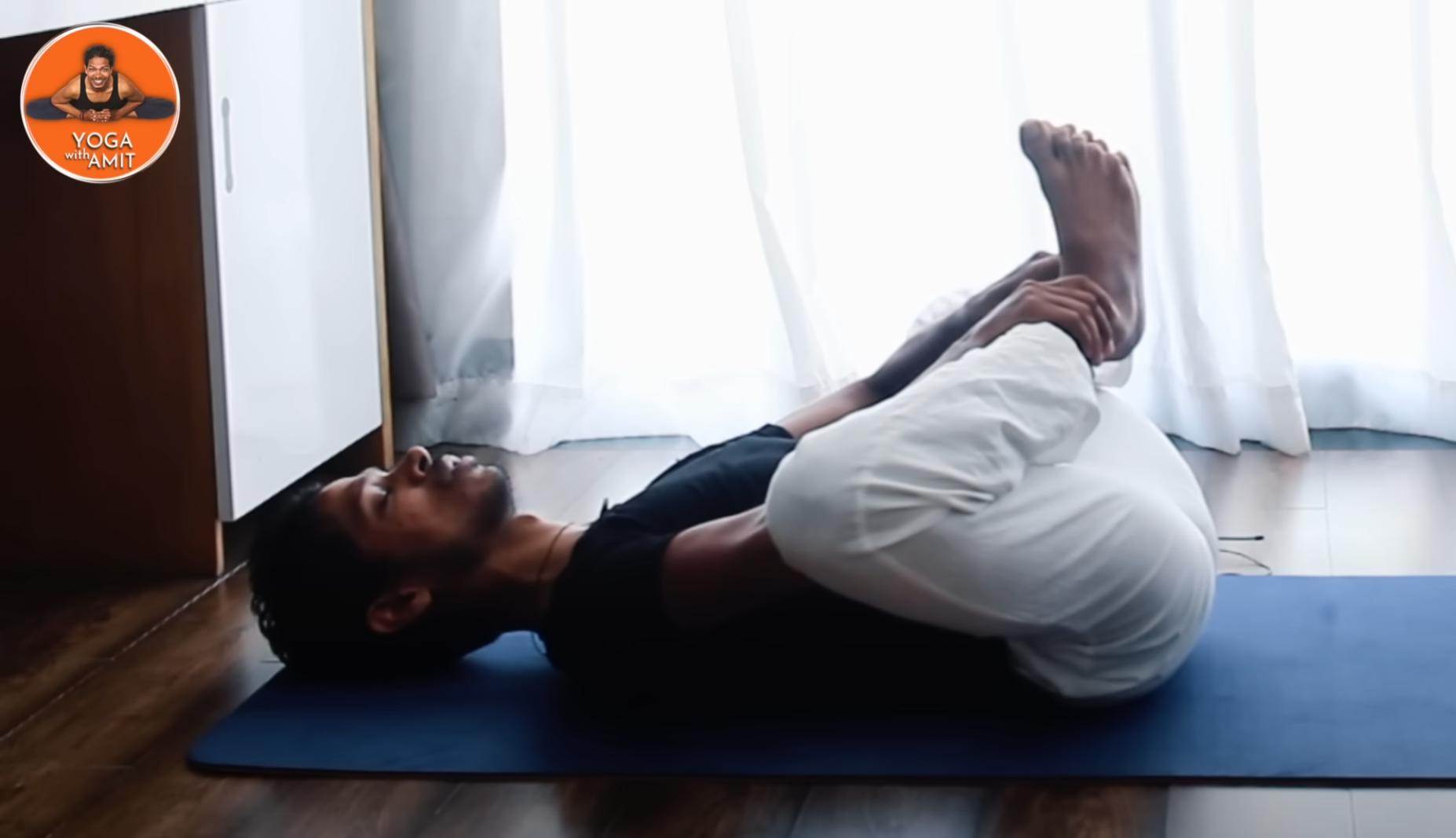
Step 5: Butterfly Press
The Butterfly Press is a dynamic exercise that targets the inner thighs and hips, promoting flexibility and relaxation in these areas. Here’s how to perform the Butterfly Press:
- Position your feet: While still lying on your back, bend your knees and bring the soles of your feet together, allowing your knees to fall out to the sides.
- Place your elbows: Carefully position your elbows on your knees, ensuring they are comfortable and stable.
- Press your knees: Gently push your knees away from your body using your elbows, focusing on the action and not on achieving the full range of motion.
- Draw your feet: At the same time, try to draw your feet towards your chest, creating a gentle stretch in your hips and inner thighs.
- Hold the pose: Maintain this position for a few moments, breathing deeply and evenly.
- Release: Slowly release the pose, allowing your legs to relax and return to the starting position.
Remember to listen to your body and avoid pushing yourself beyond your comfort level. This exercise can be adjusted to match your flexibility, and it’s essential to prioritize the quality of the movement over the range of motion.
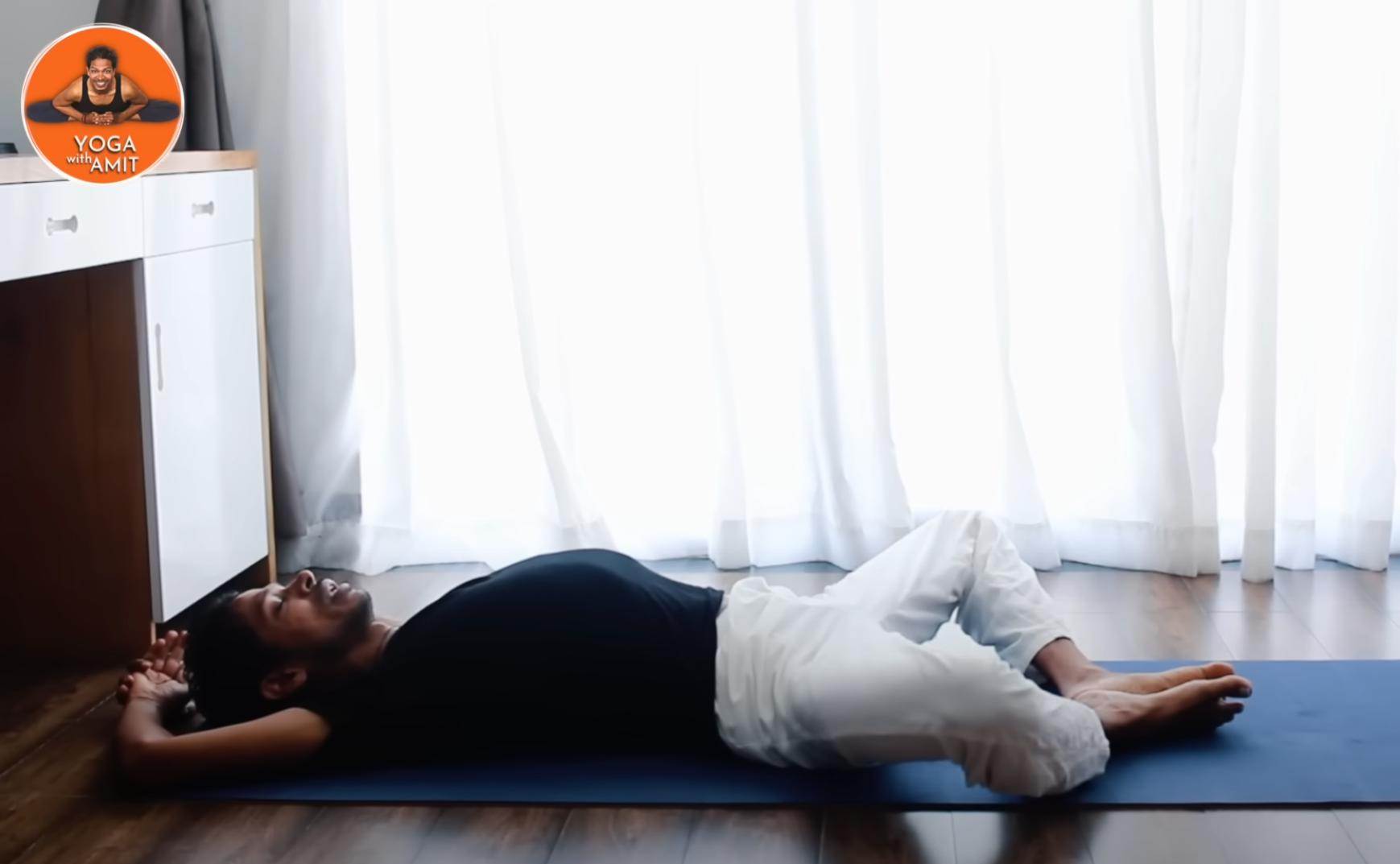
Step 6: Reclined Butterfly
The Reclined Butterfly is a restorative pose that helps to open the hips and relax the muscles in the inner thighs. To perform this exercise, follow these steps:
- Position your feet: While lying on your back, bend your knees and bring the soles of your feet together, allowing your knees to fall out to the sides.
- Rest your hands: Place your hands on your thighs or at your sides, whichever feels most comfortable and relaxing.
- Relax your body: Close your eyes and allow your body to fully relax, focusing on releasing any tension in your hips and inner thighs.
- Hold the pose: Maintain this position for 20 seconds to one minute, breathing deeply and evenly throughout the duration.
- Release: Gently lift your knees back up, bringing your feet to the ground, and allow your legs to relax.
Remember to listen to your body during this pose and adjust the position as needed to ensure comfort and relaxation. The Reclined Butterfly can be modified by placing pillows or folded blankets under your knees for additional support if needed.
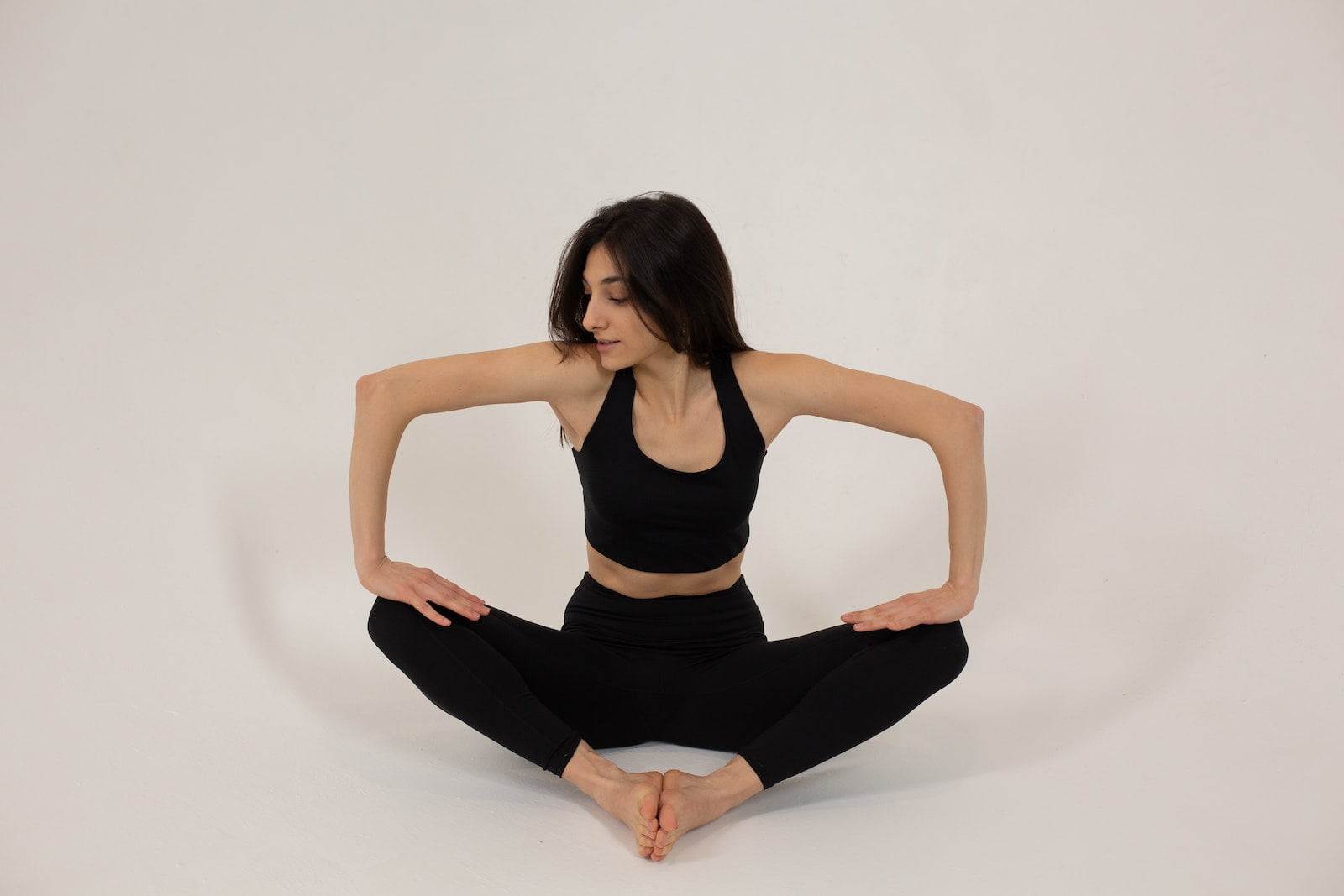
Step 7: Seated Butterfly
The Seated Butterfly is a grounding pose that helps to open the hips and stretch the inner thighs while promoting good posture. To perform this exercise, follow these steps:
- Transition to a seated position: From the reclined position, gently push yourself up into a seated posture, keeping the soles of your feet together.
- Maintain proper alignment: Focus on keeping your back straight and your shoulders relaxed. Don’t worry about the position of your knees or feet—just ensure your overall posture is comfortable and well-aligned.
- Hold your feet: Reach forward to hold your feet, either by grasping the sides or interlocking your fingers around the tops of your feet.
- Close your eyes: With your eyes closed, tune into your breath and the sensations in your body, promoting relaxation and mindfulness.
- Gently shake your knees: Allow your knees to gently shake up and down, ensuring the movement is comfortable and enjoyable.
- Hold the pose: Stay in this position as long as you feel comfortable, enjoying the posture and reflecting on its benefits for prostate health.
The Seated Butterfly is a versatile pose that can be adapted to your level of flexibility and comfort. Remember to listen to your body and adjust the position as needed to ensure a positive experience.
Step 8: Final Relaxation
It’s essential to end your yoga practice with a moment of relaxation and reflection. To wrap up your routine, follow these steps:
- Return to the seated butterfly position: After completing the previous exercises, come back to the seated butterfly pose, maintaining a straight back and relaxed shoulders.
- Breathe deeply: Close your eyes and focus on your breath, allowing your body to fully relax and absorb the benefits of your practice.
- Stay in the pose: Remain in this position for as long as desired, reflecting on the positive impact of the routine on your prostate health and overall well-being.
Remember, you can repeat this yoga routine two to three times daily, ensuring your stomach is empty to avoid discomfort. Regular practice can lead to improvements in your prostate health and overall sense of wellness.
Note: It’s important to consult with a healthcare professional before starting any new exercise routine, including yoga for prostate health. This article should not be considered medical advice, and is intended for informational purposes only.
Potential Risks and Complications Associated with Prostate Health Issues
Prostate health issues, such as prostate enlargement, prostatitis, and prostate cancer, can lead to various complications and risks if not addressed promptly and appropriately. Some potential risks and complications include:
Urinary problems
Prostate enlargement or inflammation can cause difficulty in urination, weak urine flow, frequent urination, and urinary tract infections. If left untreated, these issues can progress to more severe conditions, such as:
- Acute urinary retention
- Kidney damage
Sexual dysfunction
Prostate health issues can negatively impact sexual function, leading to:
- Erectile dysfunction
- Painful ejaculation
- Reduced libido
Prostate cancer
In some cases, prostate health issues may be indicative of prostate cancer, which can be life-threatening if not detected and treated early.
Emotional distress
Dealing with prostate health problems can cause anxiety, stress, and depression, affecting an individual’s overall quality of life.
It’s essential to consult with a healthcare professional if you suspect you have prostate health issues and to follow their recommendations for proper treatment and management.
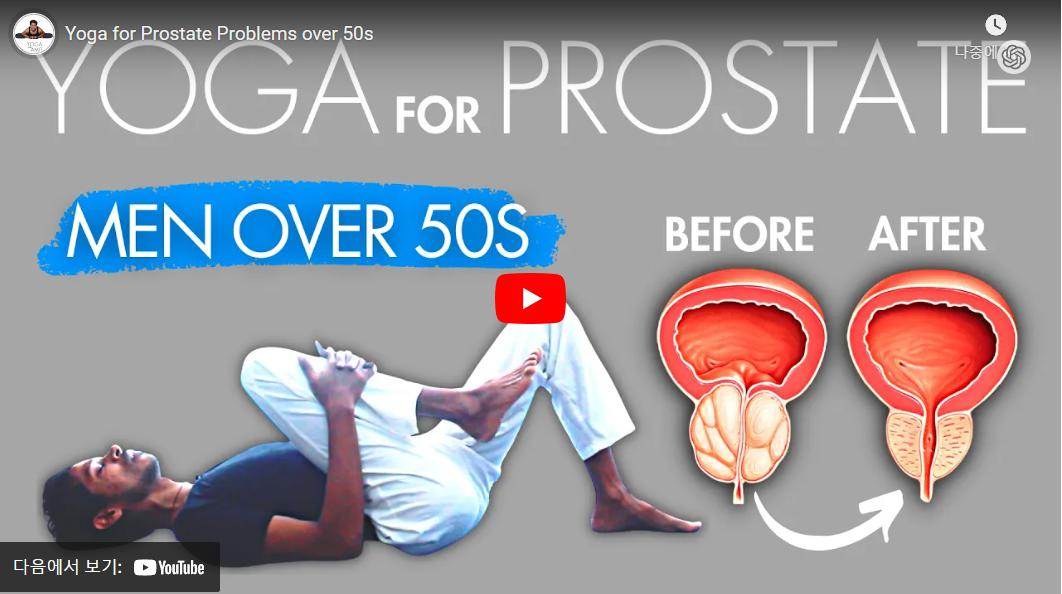
Impact of Prostate Health on Quality of Life
Prostate health issues can significantly impact an individual’s quality of life, affecting not only their physical well-being but also their mental and emotional health. Prostate health issues can result in a variety of challenges that affect daily living:
Physical Discomfort
Symptoms like pain during urination, weak urine flow, and frequent urination can cause physical discomfort and disrupt daily activities. These challenges include:
- Pain during urination: Inflammation or infection can cause pain or burning sensations during urination, making the process uncomfortable.
- Weak urine flow: Prostate enlargement may constrict the urethra, leading to weak urine flow and difficulty emptying the bladder.
- Frequent urination: The need to urinate frequently can interrupt work, social activities, and leisure time.
Sleep Disruption
The need to urinate frequently during the night may lead to poor sleep quality and chronic fatigue. Issues related to sleep disruption include:
- Nocturia: Waking up multiple times during the night to urinate can disrupt the sleep cycle, leading to poor sleep quality.
- Daytime fatigue: Insufficient sleep can cause daytime fatigue, affecting productivity, focus, and overall well-being.
- Mood changes: Persistent sleep disturbances can contribute to irritability, mood swings, and emotional instability.
Relationships and Intimacy
Sexual dysfunction and reduced libido can strain intimate relationships, leading to feelings of frustration and isolation. Impacts on relationships and intimacy include:
- Erectile dysfunction: Prostate health issues can contribute to erectile dysfunction, affecting self-esteem and intimacy within relationships.
- Reduced libido: Hormonal imbalances or the emotional stress associated with prostate health issues can lead to a decreased interest in sex.
- Communication difficulties: Discussing sensitive topics like sexual dysfunction can be challenging and may lead to misunderstandings or conflicts within relationships.
Mental Health
Anxiety, stress, and depression can arise from dealing with the physical symptoms and emotional impact of prostate health issues. Mental health challenges include:
- Anxiety: Worrying about symptoms, prognosis, and the impact of prostate health issues on daily life can contribute to increased anxiety.
- Stress: Managing symptoms, medical appointments, and treatment plans can create additional stress.
- Depression: Chronic pain, sleep disturbances, and relationship difficulties can lead to feelings of sadness, hopelessness, and depression.
In conclusion, the impact of prostate health on an individual’s quality of life can be significant, touching upon various aspects of daily living. Addressing these challenges and seeking proper medical care can help improve overall well-being and minimize the negative consequences of prostate health issues.
Importance of Seeking Medical Advice
It’s essential to consult with a healthcare professional if you suspect you have prostate health issues or before starting any new exercise routine. Medical advice should be sought for the following reasons:
Proper Diagnosis
A healthcare professional can accurately diagnose your prostate health issue and recommend the most effective treatment plan.
Personalized Guidance
Your healthcare provider can help you determine whether a particular exercise routine, including yoga, is safe and suitable for your specific health condition.
Monitoring Progress
Regular check-ups with your healthcare provider can ensure that your treatment plan remains effective and can be adjusted as needed to optimize your progress.
Reducing Risk of Complications
Seeking medical advice and following recommended treatments can help minimize the risk of complications associated with prostate health issues.
Conclusion
The impact of prostate health on an individual’s quality of life underscores the importance of seeking medical advice before starting any new exercise routine. Timely diagnosis, personalized guidance, and proper treatment can help improve overall well-being and reduce the risk of complications related to prostate health issues.
FAQs
Q. How often should I practice this yoga routine for prostate health?
You can practice this yoga routine two to three times daily. Regular practice can lead to improvements in your prostate health and overall sense of wellness. Remember to practice on an empty stomach to avoid discomfort.
Q. Can I modify the exercises if I have limited flexibility?
Absolutely! It’s essential to listen to your body and adjust the positions as needed to ensure comfort and relaxation. You can use props like pillows or folded blankets to provide extra support or modify the range of motion to match your level of flexibility.
Q. Is this yoga routine suitable for beginners?
Yes, this yoga routine is designed to be accessible for individuals of all skill levels, including beginners. Just remember to listen to your body, practice at your own pace, and modify the exercises as needed to suit your comfort level.
Q. Can this yoga routine help with other health issues besides prostate health?
While this routine specifically targets prostate health, many of the exercises also promote flexibility, relaxation, and improved circulation. Practicing yoga regularly can lead to various health benefits, including reduced stress levels, improved posture, and increased overall well-being.
Q. How long does it take to see improvements in prostate health from practicing this yoga routine?
Results may vary from person to person, depending on factors like consistency of practice, individual health, and lifestyle choices. It’s essential to be patient and maintain a regular practice to give yourself the best chance of experiencing improvements in your prostate health.
Q. Can I combine this yoga routine with other forms of exercise?
Yes, you can certainly combine this yoga routine with other forms of exercise. It’s essential to maintain a well-rounded fitness regimen that includes activities like cardio, strength training, and flexibility exercises. Practicing this yoga routine in addition to other forms of exercise can contribute to better overall health and well-being.
Conclusion
By incorporating this 8-step yoga routine into your daily life, you can take an active role in supporting your prostate health and overall well-being. Remember to listen to your body, modify the exercises as needed, and practice consistently for the best results. Yoga is a powerful tool for not only improving prostate health but also promoting relaxation, flexibility, and stress relief. Keep practicing and embrace the transformative power of yoga on your journey to better health. Namaste!